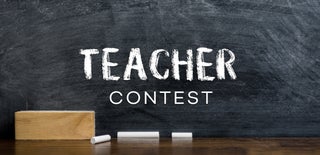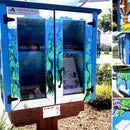Introduction: All About Me Book Project - Art, K-2
Whether you are a designated art teacher or a classroom teacher, a great artist or you can’t draw a straight line, you can teach art. With young children an art teacher is there to guide and support. A good teacher will provide the materials for kids to explore their own creative outlets at their own levels and encourage them throughout projects.
Art project goals may be different than you expect. For example, a project may be about exploring feelings or improving fine motor control, rather than drawing a flower that looks like a flower, or even ending up with something to take home. This book project is like that. It is intended to instruct on multiple levels:
- Guided, open-ended drawing pages encourage introspection and discussion
- Creative thinking and problem solving
- Varied materials foster muscle development for fine motor skills
- Partially drawn images help grow confidence and reduce frustration
- Partially drawn images also help parents understand the project and hopefully encourages conversation
- The multipart/multi-day format of the project teaches children about both planning and patience
Attachments
Supplies
Two sheets of construction paper per child, for book covers.
One set (4-8 pages) of preprinted "All About Me" sheets per child. These are handed out one at a time.
Basic art supplies as decided on for each page. More on this in the coming steps.
Step 1: The Book
"All About Me" is a multi-part, hands-on book project that can easily be adjusted to a child's skill level. It uses basic supplies that most providers and schools have on hand. No experience or skills are necessary for students or teachers.
"All About Me" is a book mostly drawn by each child, telling that child's story. Each art period the class will get one page of the book to work on. 20-50 minutes per page is a good time estimate, depending on the child and that day's materials. Each page is a life topic such as family, animals, etc. that will have a title on the top and possibly an unfinished drawing in the center.
Before a page is handed out for class, the teacher should discuss that day's materials. Also, and most importantly, have a discussion about what could go on the page. This is a very interactive part of the project for me. It is the time to encourage imagination and creativity. Children should be ready with ideas and to begin their page when the discussion is over.
Attachments
Step 2: Pages
PAGES (They can go in any order)
Each page is it's own project. A page is a single element of the child's life and can be real or imagined.
Plan on 4 - 8 pages for your book project. The number of pages will be determined by how much time you have for the project, the teacher to student ratio, and the ages of your students. You can plan 4-5 pages and decide if you want to do more after you see how your class goes. Some classes do a page a week, some do a page every day for a week or more, and older kids may do two pages in each art session.
Artwork will be one side per page, stapled on the left.
One favorite page will be trimmed and glued to the front cover, with the title "All About Me"
My Favorite Animal
Can be real or imaginary, may be a pet, or the pet you wish you had.
Page: Line drawing of a generic "animal" without details.
My Family
Page: On blank paper, title on top
My House
Page: Line drawing of house without details. A plain square is good since it can be turned into a room, a house, or an apartment.
Me
Page: Self-portrait. Generic head, arms, legs
Can be titled "Me" on top. Child's name on bottom.
Other Pages:
Vehicle
Food
Field trip (this is a great page after a class trip, use the trip location as the title)
Activity/job/what I want to be
Favorite place
Happy Place
Step 3: Age Appropriate Lettering
Pre Readers
Teacher hands out pages with titles preprinted. Encourage children to trace over the letters. Help or write names as appropriate.
Learning to Read and Write
Dashed or dotted lettering preprinted on the pages. Children will trace over and write the titles. If your class is more advanced, print ruled lines (like on loose leaf paper) and have them write titles using printed rules.
Can Read and Write
Kids write titles themselves.
Note: With older children you can do the same project, but use blank paper for the pages. Older children can draw from scratch, and write their own titles. Encourage them to work large and fill the page.
Attachments
Step 4: Getting Started
Once you have your first page ready to hand out, you can start on the book. First, decide what art materials you want to use. I use a different set of materials for each page. I'll go over the first few pages in the following steps, but feel free to mix things up or choose your own techniques.
The first page I'll go over, is the self portrait. Everyone has a head, arms, and legs - So that's what's on the Me page. The child (or a helper) adds a nice, big name at the end.
Since this is the first project day, I like to spend more time on discussion and explanation, and choose a simple medium. Markers are a good choice if you have enough for everyone to have a good selection of colors without getting frustrated. Otherwise, try crayons.
Younger children may need to think about what makes a face. Older children may draw a sports uniform, or other more complicated self-identifying clothing and accessories. Creating a background is important for all ages. What's around a person says a lot about them.
Step 5: Next Page
My Family is a blank page because I don't like to make any assumptions about what a child considers to be their family. Also, I watch for any emotional distress "family" may cause, both during the discussion and the drawing. Younger children will draw stick figures and that's fine.
I like to use crayon resist for this page.
Crayon Resist
Paper, crayons, water, brushes
Draw with crayons. Make sure the children use a heavy hand (press hard!) and fill in as much as possible. The more crayon used, the better the final result. When the drawings are done put the crayons away and take out watercolor paints.
Instruct the children to paint on their drawings to add color and backgrounds using very watered down watercolors. The paint won't stick to the wax, but will fill in all the white spots. Keep an eye that the pages don't get too soaked or they could rip. (If this happens, let the page dry and glue it to a new blank sheet.) When the painting is done, allow the pages to dry flat.
Step 6: Next Page
My Favorite Animal is the favorite page of many of my students. Kids love talking about their pets and the animals they've seen at the zoo. Like the self portrait, I use a circle for the head and more or fewer body parts depending on the ages of the class. If the animal a child wants to draw can't be worked out with the template, just give that child a blank sheet...and just a little help if necessary.
Collage
Collage is great for the animal page. It's fun, flexible, and creative.
Glue, scissors, old magazines, markers, stickers, crayons, yarn, small fabric scraps, anything else that's flat and fun to stick to paper
Start by getting some old magazines and have the students shred them into colorful bits. Set out the shreds and all of the other materials. Encourage the kids to do their drawing before gluing, but it's okay to go back and forth. Yarn, magazine scraps and fabric are great for fur and patterns.
Have your students sort and clean up when everyone's done.
Attachments
Step 7: Next Page
(The photo above does not depict the art technique I talk about below - sorry, I forgot photos)
The last page I'll go over is My House. Remember that a house can be a single family home, an apartment, or even a hotel. To be versatile, I use just a big square as the page art template. This can easily become an elaborate home or a simple room.
Tissue and Starch Painting
Colored tissue paper, liquid laundry starch, brushes, scissors
Students will cut or tear the tissue paper into shapes that will complete their House. They lay the tissue into place and paint over it with some starch. The tissue should be completely wet, but not soaked. The tissue becomes translucent and will remain somewhat translucent after it dries. The tissue paper can be layered. The overall effect is like stained glass.
Note: Colored tissue paper can often be found very cheaply at the dollar/discount store.
Step 8: More Pages?
If you want more pages, you can choose from my suggestions or make up your own. You can also get input from your students. Other art materials can include tempera paint, watercolors, construction paper collage, etc. Older students may want to try making a page using a computer if you have the resources. You can repeat materials if you want as well. Some classes love a particular medium.
Step 9: Assemble & Finish
When all the pages are completed and dry, have your students pick the order they want for their book. Have them also pick one page to be used for the cover.
Get the 2 pieces of construction paper and put them on the outsides of the ordered pages. These are the front and back covers. A teacher should come around and staple the pages and covers together about 1/4" from the left edge down the side. 5 staples are ideal.
The cover artwork will need to be trimmed (about 1/2"). Decide if your students are able to do this, or if a teacher should collect the pages and do the trimming.
After the page is trimmed, the teacher or student, depending on level, writes All About Me and the student's name on the cover page.
Then the students will center and glue the cover art onto the front construction paper. I like a glue stick for this job.
When the cover is dry, the books are ready. I hope your students enjoy this project as much as mine have. I'd love to hear how it goes!

Participated in the
Teacher Contest














